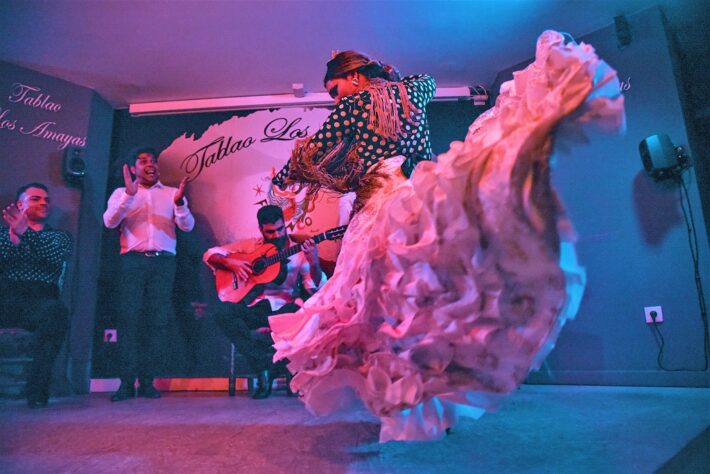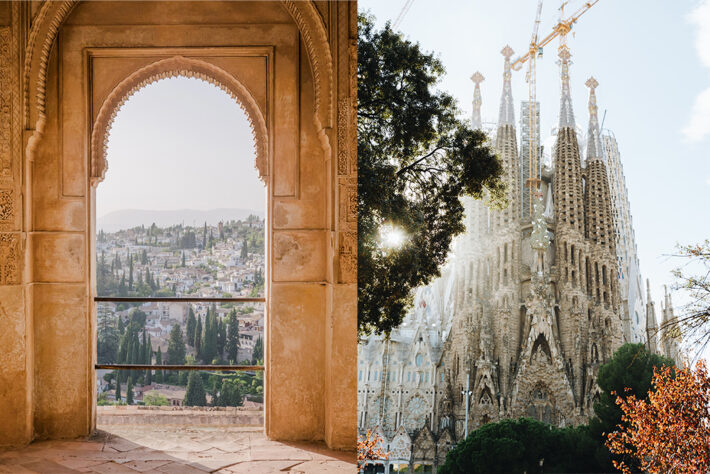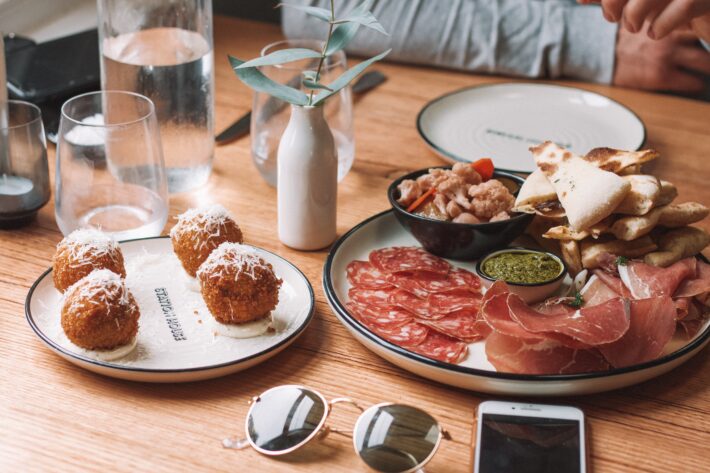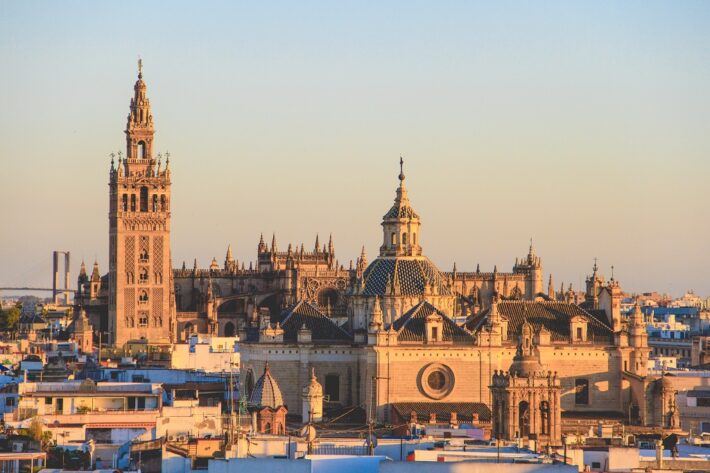What is flamenco? Is it a dance, a musical genre, or both? Flamenco is an art in itself. It’s not just a dance or a song that can be learned; you have to feel it with your soul. And we will help you unveil this art with our ultimate flamenco guide!
Flamenco artists tell a story with their entire body, their voices, their clapping, and their guitars. Flamenco is the result of centuries of fusion of traditions from different cultures that have generated a unique spectacle.
The most important thing in flamenco is passion. It’s not about technique, but about emotion: if you don’t feel it, you can’t do it. It’s not just a physical expression, it must come from the heart.
Sara Baras, flamenco dancer
What is FLAMENCO? The Ultimate Guide to Flamenco Art in Spain:
Here, we spill the beans on everything you need to know about flamenco – its origins and traditions and help you uncover Spain’s top flamenco shows.
1. What’s the Origin of Flamenco? Brief History of Flamenco:

To start with our complete flamenco guide, we’ll start with its history. It’s clear that to get what flamenco is all about, we need to learn about its origin.
Traditional flamenco had its roots in southern Spain, specifically in the region of Andalusia.
The birthplace of the main flamenco styles is known as the “Holy Trinity,” which includes three Andalusian cities: Cádiz, Jerez de la Frontera, and Seville. While flamenco is popular all over Spain, the purest flamenco spectacles undoubtedly take place in Andalusia.
The most significant influence on flamenco comes from the gypsy culture. Ages ago, the Roma people journeyed from northwest India to Europe, bringing along their songs, dances, and traditional music to Spain.
However, the life of the gypsy people was quite tough. They faced discrimination and were forced to give up their culture and gypsy identity. They couldn’t wear traditional clothing or perform their own rituals.
So, the gypsies retreated to the mountains, where they lived alongside Jews and Moors. Their cultures intermingled, giving birth to what we know now as flamenco art.
In the early days, flamenco songs were accompanied only by clapping hands. But in the early 20th century, during the Golden Age of flamenco, performances started to include all the elements we find in most shows today: singing, guitar playing, box drumming, clapping, and dancing
TIP: Nowadays, one of the best spots to experience this cultural blend is the neighborhood of El Sacromonte in Granada. Check out our guide for the best activities to discover Granada!
2. How is Flamenco Singing? Lyrics and Poetry
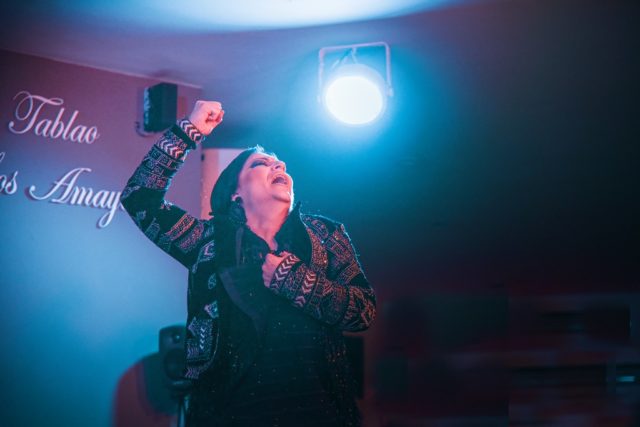
Flamenco songs narrate tales from the everyday lives of the gypsies. Stories about the hardships of discrimination, the sorrow, or the joy of a wedding celebration.
Many of these songs are written in Andalusian Romani, known as Caló. It’s a mix of Andalusian dialect and Romani languages.
Moreover, the singing depends on the emotions of the singer: the same lyrics can be expressed in various ways.
There are three types of flamenco singing:
- Cante Jondo: Complex and emotional songs. Themes often lean towards sadness, death, loss, despair, and anger.
- Cante intermedio: Less intricate and more upbeat than cante jondo. This style is accompanied by guitar playing, castanets, shoe taps, and clapping. These songs incorporate elements from various Spanish folk styles.
- Cante chico: The simplest style of flamenco music. Topics include love and humor. The rhythm is quick and lively.
3. What is Flamenco Music Like? Which are the Flamenco Instruments?
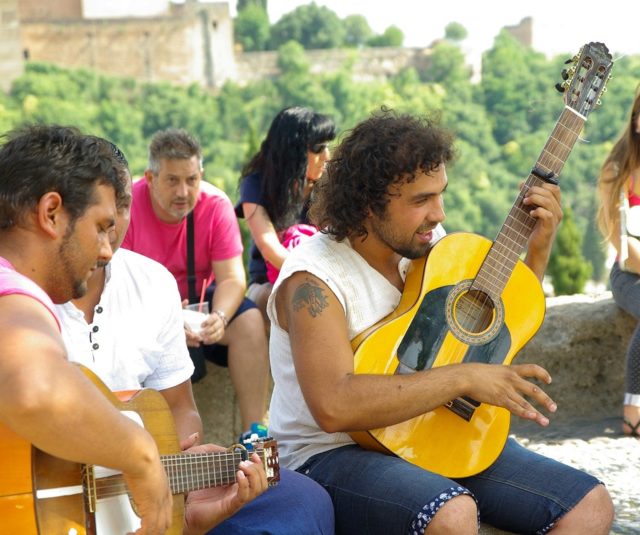
What is flamenco? Flamenco is undoubtedly the music of passion. The flamenco songs of traditional Spanish music aren’t typically written down; they’re passed down orally from generation to generation.
Additionally, during a flamenco performance, musicians improvise to match the singer’s emotions. Thus, an authentic flamenco show is always a unique narrative experience.
Now, let’s check out the instruments that usually accompany flamenco singing:
– Flamenco guitar
The flamenco guitar differs from the regular guitar in several ways. Firstly, flamenco guitarists use a capo to achieve a higher pitch.
Secondly, the flamenco guitar is played with fingers and nails, not a pick. Techniques for playing the flamenco guitar include strumming and fingerpicking.
– Castanets
Castanets are a wooden musical instrument known for their unique sound in flamenco music. Phoenicians invented this instrument about 3000 years ago. Castanets were made from common wood and were traded throughout the Mediterranean region.
Even today, the instrument is used in Portuguese and Latin American folklore, but it’s best known for its role in flamenco art.
4. What is Flamenco Dance like? Andalusian Soul in Motion
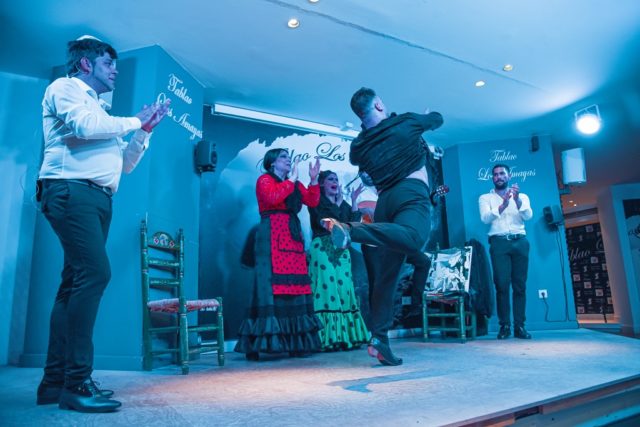
Next in our complete flamenco guide is Flamenco Dancing!
Dance perfectly captures what flamenco is, as it tells the story of the song, and each dancer expresses it in their own way. Dancers (bailaores and bailaoras) might use castanets, a shawl, the skirt’s ruffles, or their shoes to accompany the distinct moves of flamenco dance.
As mentioned earlier, flamenco was initially just singing accompanied by claps. When flamenco reached the broader public through performances in new “cafés cantantes” in different cities, new elements were added: guitar playing, shoe tapping, and finger snapping.
Flamenco dancers set the rhythm foundation with their hands and feet. Flamenco clapping is trickier than it seems at first glance, as it’s quite challenging to follow the beat.
Moreover, the music is complemented by footwork. Flamenco’s special shoes, similar to Irish tap shoes, have a distinct sound due to nails in their soles.
TIP: If you’re traveling to MALAGA, SEVILLE or GRANADA, count us in! Join one of our tours, and we’ll introduce you to the best flamenco and authentic Andalusian cuisine.
5. Flamenco Guide: What is the Traditional Flamenco Dress?
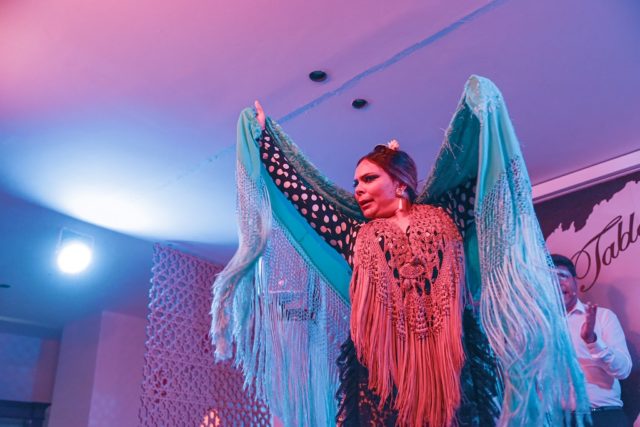
The flamenco costume originates from Seville, from the frilled dresses that late 19th-century gypsy women wore for their tasks.
– Typical Spanish Flamenco Dress: Tradition and Fashion
The most essential part of the female flamenco costume is the dress. It’s often in vibrant colors or polka-dot patterns. The dress’s skirt is made of ruffles that can weigh up to 4.5 kg, used for dancing and expressing flamenco’s emotion.
On the other hand, the male flamenco dancer’s outfit consists of tight black trousers, a shirt, and a short jacket or a vest.
One of the most unique things about flamenco attire is that it’s not just a typical outfit but a living tradition. New trends emerge each year, with even fashion shows predicting next year’s flamenco trends.
– Flamenco Shoes: The Key Sound in Flamenco Dance
Shoes are another part of the outfit. Flamenco artists dance on a wooden stage known as a “tablao.” The shoes have nails on the sole. This lets the dancers follow the rhythm of the music by tapping the stage.
– And, of course, the Flamenco Outfit Accessories!
Flamenco women dancers often wear their hair in a bun or adorned with flowers and decorative combs. They also wear earrings, necklaces, and bracelets. During the dance, performers might use a traditional shawl with tassels or a fan.
Men often wear a scarf around their neck as an accessory.
TIP: Which Are the Best Flamenco Shows in Spain?
Finally, to end our complete flamenco guide we will tell you which are the best flamenco venues in Spain.
Flamenco is unique, and without a doubt, the best way to truly understand flamenco is by experiencing a live flamenco performance.
If you’re planning to visit Spain, book your ticket to an authentic flamenco show and enjoy the flamenco passion – singing, clapping, dancing, and Spanish wine! 🙂
Here’s our selection of Spain’s best tablaos and flamenco shows. Click on the links below if you want to book your spot and enjoy an authentic live flamenco show:
- MALAGA: Espectáculo en el Tablao Flamenco Alegría en Málaga
- SEVILLA: Espectáculo Flamenco en el Tablao Andalusí en Sevilla
- GRANADA: Espectáculo Flamenco en Granada en los Jardines de Zoraya
- MADRID: Espectáculo Flamenco en Madrid Centro en el Tablao Torres Bermejas
- BARCELONA: Espectáculo Flamenco en Barcelona Centro en el Tablao Cordobés
- VALENCIA: Espectáculo Flamenco en Valencia en el Tablao Bulería
Now that you know all about flamenco, it’s your turn! Tell us in the comments what you think about this art form and whether you’ve had the chance to experience it live.
And don’t forget to subscribe to our mailing list to stay up-to-date and continue discovering the best of Spain with us!

